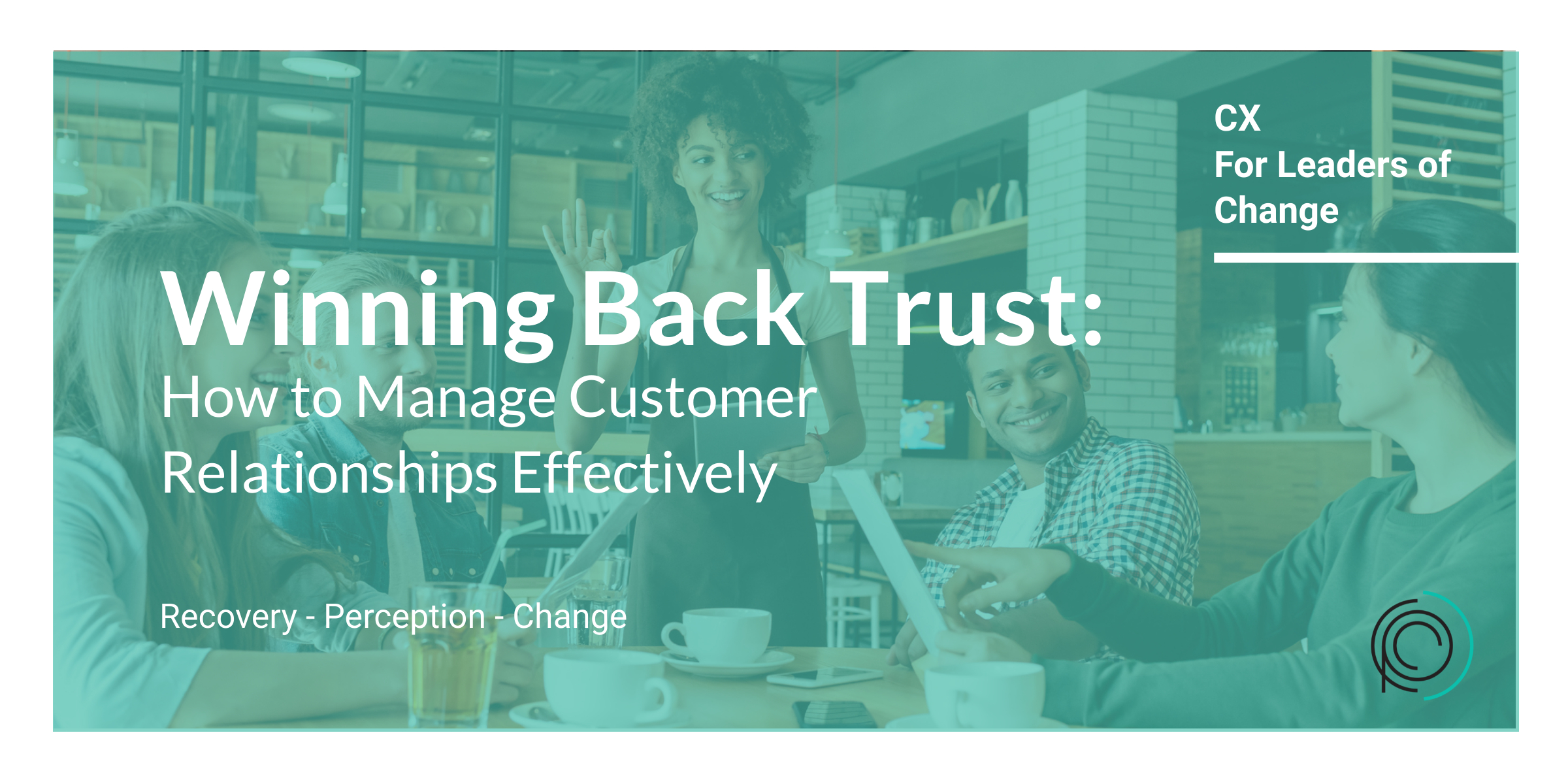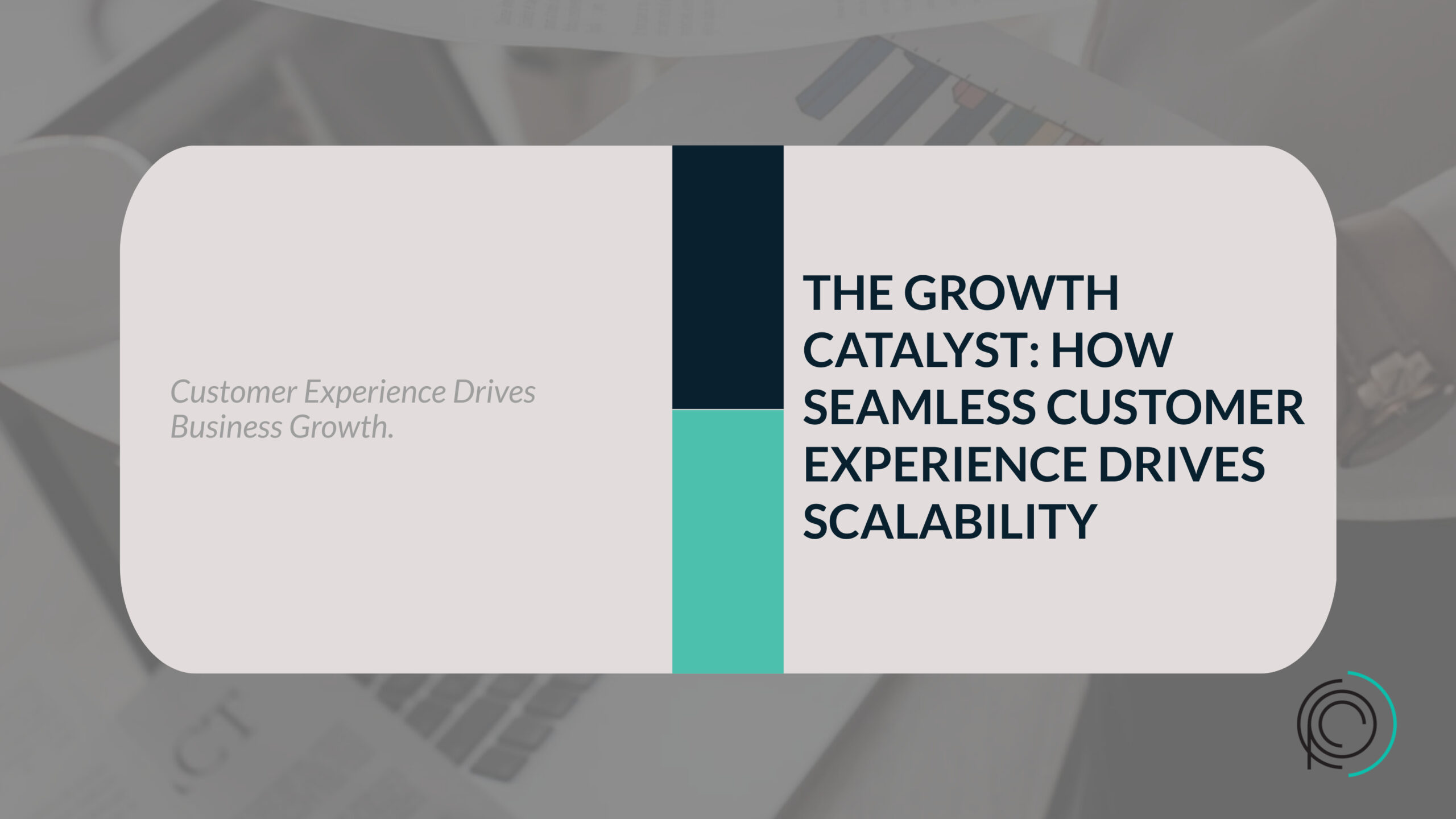Transforming Interactions: Unleash the Power of Positive Customer Experiences
Do your customers feel valued or frustrated after interacting with your company? Understanding the customer experience (CX) from their perspective is pivotal for business leaders, Senior Vice Presidents, and Presidents. This blog post explores how truly knowing your customers’ journeys can enhance CX, drive loyalty, and boost your bottom line. By delving into real-life case studies, expert opinions, and comprehensive research, we will uncover the key elements that make up a positive customer experience. You’ll learn about the common pitfalls to avoid and the best practices to adopt. By the end, you’ll have actionable insights and strategies to elevate your customers’ experiences, foster long-term relationships, and set your business apart from the competition. Let’s embark on this journey to transform your customer interactions and drive sustainable growth.
Why CX Matters
The Impact of CX on Business Success
Customer experience is more than just a buzzword—it’s a crucial component of your business strategy. Research shows that companies that excel in CX outperform their competitors by nearly 80%. Positive experiences lead to increased customer loyalty, higher retention rates, and more referrals.
When customers feel valued and understood, they are more likely to return and recommend your business to others. This not only boosts your revenue but also enhances your brand reputation. Investing in CX means paying attention to every touchpoint, from initial contact to post-purchase support, ensuring a seamless and satisfying journey for your customers.
Understanding the Customer Journey
Before you improve CX, it’s essential to understand the customer journey. This involves mapping out every touchpoint a customer has with your brand, from initial awareness to post-purchase support. Start by identifying the key stages your customers go through, such as discovery, consideration, purchase, and post-purchase engagement. During each stage, pinpoint the channels and interactions they experience, whether it’s through social media, website visits, customer service calls, or in-store interactions. By identifying pain points and opportunities for delight at each touchpoint, you can design a seamless and enjoyable experience. Continuously gather feedback and analyze customer behavior to refine and enhance the journey, ensuring it evolves with your customers’ needs and expectations.
The Role of Emotional Connection in CX
Customers remember how you make them feel. Building an emotional connection can turn a one-time buyer into a lifelong advocate. These connections are fostered through personalized interactions, where customers feel valued and understood. Demonstrating empathy, by addressing their needs and concerns sincerely, and providing exceptional service consistently are key to creating these emotional bonds. Additionally, going the extra mile and anticipating customer needs can further solidify this connection, enhancing loyalty and satisfaction over time.
Assessing Your Current CX
Gathering Customer Feedback
The first step in understanding your CX is collecting feedback directly from your customers. This can be achieved through various methods such as surveys, interviews, and focus groups, which help gather comprehensive insights on their experiences. Additionally, leveraging tools like Net Promoter Score (NPS) can provide valuable quantitative data on customer loyalty and satisfaction. It’s also beneficial to monitor social media channels and online reviews to get a broader perspective on customer sentiments. By combining these different approaches, you can gain a well-rounded understanding of your customer experience and identify areas for improvement.
Analyzing Customer Data
Leverage your existing customer data to uncover valuable trends and patterns. Start by examining metrics such as customer satisfaction scores, churn rates, and purchase history. Additionally, consider looking into customer feedback, net promoter scores, and social media sentiment. This comprehensive analysis can highlight areas where your customer experience (CX) is strong and where it needs improvement. By identifying these key insights, you can develop targeted strategies to enhance customer satisfaction and loyalty, ultimately driving better business outcomes.
Conducting Customer Journey Mapping
Customer journey mapping involves visualizing the entire customer experience from start to finish. This comprehensive process starts by identifying each touchpoint where customers interact with your brand, whether it’s online or offline. Assess the emotions involved at each stage, noting moments of satisfaction as well as frustration. Additionally, recognize any potential pain points that could detract from the overall experience. By doing this, you can pinpoint specific areas for enhancement and develop targeted strategies to improve customer satisfaction, retention, and loyalty. This holistic approach provides invaluable insights, enabling you to create a seamless and enjoyable journey for your customers.
Enhancing Customer Interactions
Training Employees for Exceptional Service
Your employees are the face of your brand. Invest in comprehensive training programs that focus on developing skills such as empathy, problem-solving, and effective communication. These programs should include practical workshops, role-playing scenarios, and continuous feedback to ensure employees are well-equipped to handle diverse customer needs. Empower your team to go above and beyond in every customer interaction, creating memorable experiences that foster loyalty and trust. Additionally, recognize and reward outstanding service to motivate employees to maintain high standards.
Leveraging Technology for Better CX
Technology can significantly enhance customer experience (CX). By implementing Customer Relationship Management (CRM) systems, chatbots, and AI-driven support, businesses can streamline their processes and provide quick, personalized responses to customer inquiries. CRM systems help in managing customer data and interactions, making it easier to understand and anticipate customer needs. Chatbots can handle routine inquiries efficiently, freeing up human agents to tackle more complex issues. AI-driven support can analyze customer behavior and offer tailored solutions, improving overall satisfaction.
To maximize the benefits, ensure your technology solutions are user-friendly and continually updated. Regular updates not only improve functionality but also enhance security, protecting sensitive customer information. Training staff to effectively use these tools is equally important to ensure a seamless experience. By leveraging these technological advancements, businesses can create a more responsive, efficient, and satisfying CX.
Creating a Customer-Centric Culture
A customer-centric culture starts from the top. Leadership must prioritize customer experience (CX) and model customer-first behaviors consistently. This involves listening to customer feedback, making data-driven decisions, and demonstrating a commitment to meeting customer needs. Encourage all employees to take ownership of the customer experience by providing training and resources that empower them to excel in their roles. Recognize and reward those who go above and beyond in delivering exceptional service. By fostering an environment where every team member understands the importance of the customer, organizations can build lasting loyalty and drive long-term success.
Personalizing the Customer Experience
Using Data to Drive Personalization
Personalization is key to a memorable CX. Use data to tailor interactions, offers, and recommendations to individual customers. This can range from personalized emails to customized product suggestions. By analyzing customer behavior and preferences, businesses can create more engaging and relevant experiences. Implementing advanced analytics and machine learning algorithms can further enhance the ability to predict customer needs and deliver timely, personalized solutions. This approach not only increases customer satisfaction but also fosters loyalty and drives long-term growth.
Segmenting Your Audience
Not all customers are the same. Segment your audience based on demographics, purchase behavior, and preferences. By doing so, you can identify key characteristics and trends within each group, allowing you to tailor your approach more effectively. This enables you to create targeted marketing campaigns, and customized product recommendations, and provide relevant experiences to meet the unique needs and desires of each segment. Ultimately, this leads to higher engagement, customer satisfaction, and improved business outcomes.
Implementing Loyalty Programs
Loyalty programs can significantly enhance Customer Experience (CX) by rewarding repeat customers and encouraging brand advocacy. To create an effective loyalty program, consider offering exclusive deals, early access to new products, and personalized rewards that cater to individual preferences. Additionally, implementing a points system can add an element of gamification, making the experience more engaging for customers. Regularly updating rewards and incorporating customer feedback can further ensure the program remains relevant and exciting, ultimately fostering long-term loyalty and increasing customer retention.
Measuring CX Effectiveness
Key Performance Indicators (KPIs)
To measure the effectiveness of your CX initiatives, establish clear KPIs. These may include customer satisfaction scores, Net Promoter Score (NPS), customer retention rates, and average resolution time. Additionally, consider metrics such as customer effort score (CES) and first contact resolution (FCR). Regularly review these metrics to gauge progress, identify areas for improvement, and make data-driven decisions. Gathering qualitative feedback through surveys and direct customer interactions can also provide valuable insights into the customer experience. Consistently monitoring and analyzing these indicators will help ensure your CX efforts are delivering the desired results.
Customer Satisfaction Surveys
Regularly conduct customer satisfaction surveys to gather direct feedback on your CX efforts. These surveys should be comprehensive, covering various aspects of the customer journey. Ask specific questions about recent interactions, overall satisfaction, and areas for improvement. Include questions that gauge the effectiveness of your support team, product quality, and overall user experience. Use this feedback to identify trends, pinpoint problem areas, and make data-driven decisions that will enhance customer satisfaction and loyalty. Additionally, consider implementing follow-up surveys to assess the impact of any changes made based on initial feedback.
Continuous Improvement Processes
Customer Experience (CX) is not a one-time effort but an ongoing process that requires constant attention. Implement continuous improvement processes to regularly assess and enhance your CX strategies. This means setting up systems for ongoing evaluation, collecting and analyzing data, and benchmarking against industry standards. Encourage innovation and be open to making changes based on customer feedback and evolving market trends. Engage your team in brainstorming sessions to generate new ideas, and consider using technology and tools that can help track and measure customer satisfaction. By making continuous improvement a core part of your business strategy, you can ensure that your CX efforts remain effective and aligned with customer expectations.
Real-World Examples of Excellent CX
Case Study 1: Zappos
Zappos is renowned for its exceptional customer service. Their commitment to going above and beyond for customers, such as offering free returns and 24/7 support, has built a loyal customer base and a positive brand reputation. They even empower their support team to make decisions that can surprise and delight customers, such as sending flowers to a customer who had a family loss. This level of dedication has set a high standard in the industry and fostered immense customer loyalty.
Case Study 2: Apple
Apple’s focus on creating a seamless and enjoyable customer experience (CX) has significantly contributed to its success. From intuitive product design to exceptional in-store experiences, Apple consistently prioritizes the customer at every touchpoint. Their Genius Bar, for example, offers personalized technical support and training, enhancing the user experience and customer satisfaction. Moreover, the integration of hardware, software, and services creates a cohesive ecosystem that simplifies the user’s interaction with technology.
Case Study 3: Amazon
Amazon’s customer-centric approach is evident in its easy returns process, personalized recommendations, and fast delivery. Their use of advanced algorithms to suggest products based on user behavior has revolutionized online shopping. Additionally, services like Amazon Prime offer benefits such as free two-day shipping and access to streaming content, further enhancing the customer experience. By continually innovating to meet customer needs, Amazon has become a leader in CX, making shopping convenient and efficient for millions of users worldwide.
Common CX Challenges and How to Overcome Them
Challenge 1: Inconsistent Experiences
Inconsistent experiences across different channels can significantly frustrate customers and damage brand loyalty. To overcome this, ensure that your branding, messaging, and service delivery are uniform whether customers interact with your business online, in-store, through a call center, or on social media. Implementing a unified communication strategy and training your staff to deliver a consistent customer experience are crucial steps in addressing this challenge.
Challenge 2: Lack of Personalization
In today’s market, customers expect tailored and personalized experiences. Failing to meet these expectations can result in disengagement and lost business. Overcome this challenge by leveraging customer data and advanced technology to tailor interactions and offers to individual preferences and behaviors. This can include personalized email campaigns, custom product recommendations, and targeted marketing efforts that show customers you understand and value their unique needs and preferences.
Challenge 3: Slow Response Times
In our fast-paced world, customers expect quick and efficient responses. Slow response times can lead to dissatisfaction and a negative perception of your brand. To address this challenge, implement AI-driven chatbots to handle common inquiries and provide instant responses, and streamline your support processes to ensure that complex issues are handled swiftly by your customer service team. Regularly review and optimize your customer service protocols to maintain high standards of efficiency and satisfaction.
The Future of CX
Emerging Trends in CX
Staying ahead of the curve in the world of Customer Experience (CX) requires a vigilant eye on emerging trends. These trends may include significant advancements in artificial intelligence, which can predict customer needs and streamline interactions, as well as virtual reality experiences that offer immersive and engaging customer journeys. Additionally, hyper-personalization is becoming more prominent, allowing businesses to tailor their services and communications to the individual preferences of each customer. Adapting to these trends can not only enhance customer satisfaction but also give you a crucial competitive edge in the market.
The Role of AI and Automation
AI and automation are revolutionizing CX by enabling faster, more accurate responses and facilitating personalized interactions at scale. These technologies can analyze vast amounts of data to provide insights into customer behavior, automate routine tasks, and offer predictive support, which can significantly improve the efficiency and effectiveness of customer service operations. Investing in AI-driven tools, such as chatbots and automated customer service platforms, can enhance your CX strategy, providing a seamless and consistent customer experience across all touchpoints.
The Importance of Adaptability
The business landscape is constantly evolving, and so too are customer expectations. It is vital for organizations to cultivate a culture of adaptability and agility to quickly respond to these changes. This involves continuously monitoring market trends, gathering customer feedback, and being willing to pivot strategies when necessary. By fostering a mindset of continuous improvement, businesses can not only meet but exceed customer expectations, ensuring long-term loyalty and satisfaction. Embracing adaptability as a core organizational value will enable you to stay relevant and competitive in an ever-changing environment.
Conclusion
Understanding your customers’ experiences is the key to unlocking exceptional CX. By gathering feedback, leveraging technology, and personalizing interactions, you can create a customer-centric culture that drives loyalty and business success. Remember, CX is an ongoing effort that requires continuous improvement and innovation. Ready to take your CX to the next level? Start implementing these strategies today and watch your business thrive.
By following these insights and strategies, business leaders, Senior Vice Presidents, and Presidents can elevate their customer experience, foster loyalty, and achieve a competitive edge in the market. For further guidance and personalized support, consider signing up for Jasper’s free trial and explore how AI can enhance your CX efforts. If you’re ready to improve your customer experience, connect with one of our experts today.







